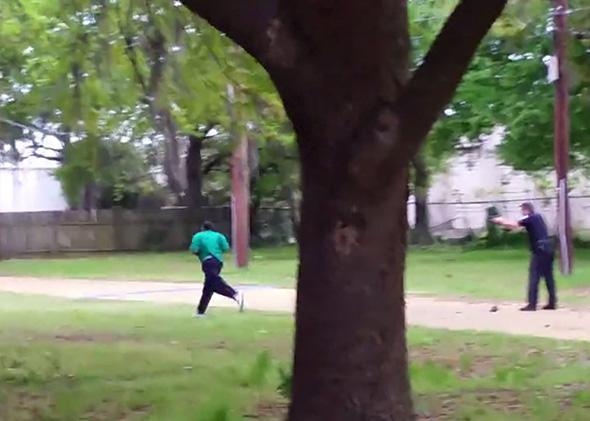The grisly video of Walter Scott’s death that surfaced late Tuesday depicts police officer Michael Thomas Slager shooting at Scott eight times as he attempted to run away. But the video doesn’t end there. It continues for several more minutes, with Scott lying motionless and face down on the ground. Slager can be seen approaching Scott’s body and shouting at him, several times, “Put your hands behind your back.” He then leans down and cuffs Scott’s hands behind his back.
It is a nauseating thing to watch: a seemingly gratuitous act of domination over a man who has already been rendered helpless. But it turns out that cuffing a suspect after he’s been shot is standard police protocol. Shooting someone, I was told Tuesday night by a police source, is considered a form of arrest—and officers are trained to cuff everyone they arrest, regardless of how the act of taking the suspect into custody was carried out.
As Jesse Singal at Science of Us wrote last year, after the police killing of a mentally ill man who had been suspected of stealing energy drinks and pastries from a St. Louis convenience store, cuffing a dead man “comes across as a desecration.” But according to guidelines printed in the Police Chief, a law enforcement magazine cited by Singal, it’s meant to protect officers from being attacked by suspects they presume to be dead but turn out not to be.
“Some officers might feel that it is not nice to handcuff suspects that have been shot, and others might believe that it is unnecessary to cuff all suspects because some are ‘obviously’ dead,” writes David Klinger, a criminologist at University of Missouri–St. Louis and a former patrol officer in L.A. But according to Klinger, there are documented cases of suspects not being as incapacitated as the officers who incapacitated them believed. And so, it’s best to always cuff them, just to be safe. “No matter how severely injured they might be,” Klinger writes, “all downed suspects should be handcuffed.”
To most laypeople, however, there is something grotesque and inhuman about this—a point of view articulated by civil rights lawyer Ronald L. Kuby in a 2007 New York Times article: “Cuffing people after they’ve been shot, or when they’re dead, or when they’re dying,” Kuby was quoted as saying, “is one of the ugliest, most barbaric, unnecessarily horrifying things that the police do, and they do it as a matter of course.” Given the charges against Slager—and the unambiguous video of the shooting—the act seems particularly barbaric in this case.
